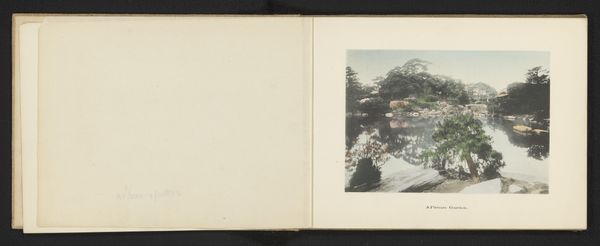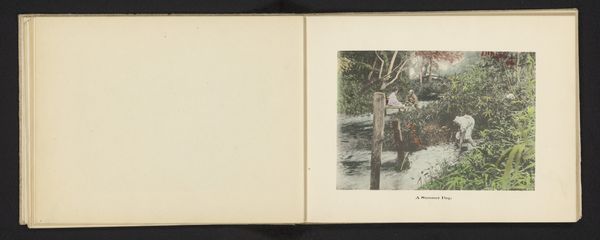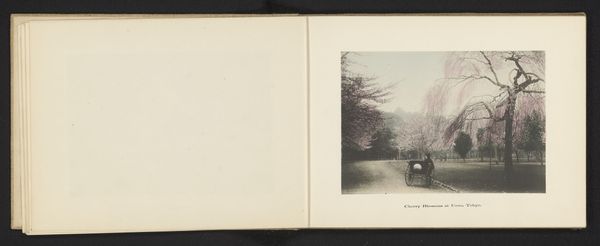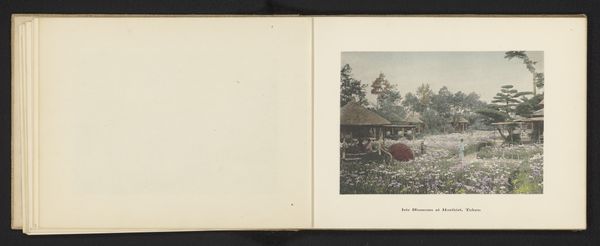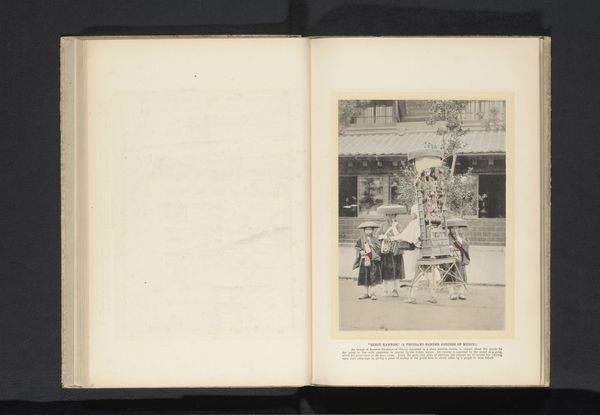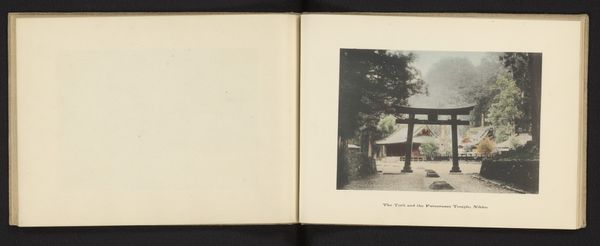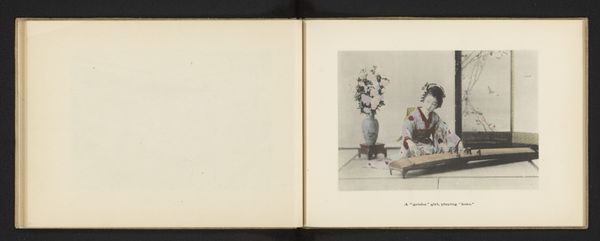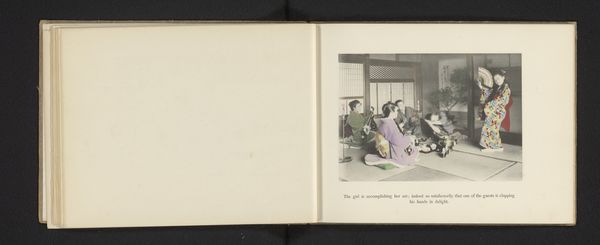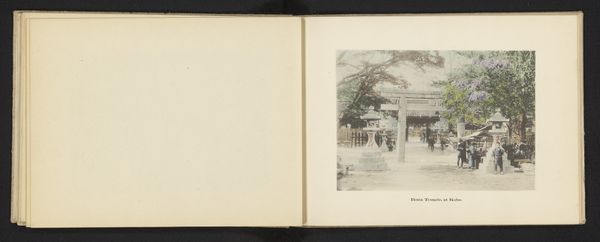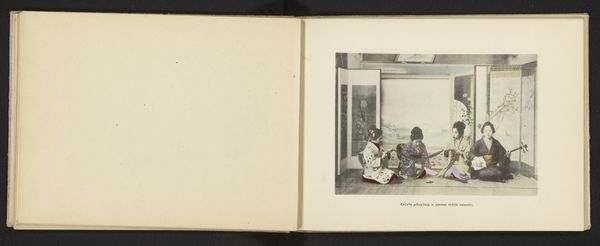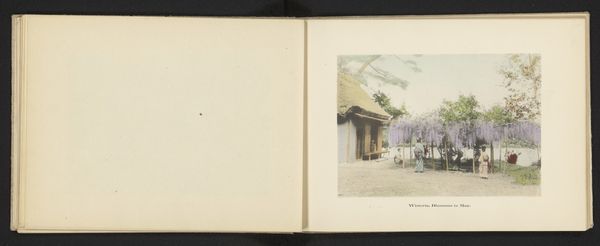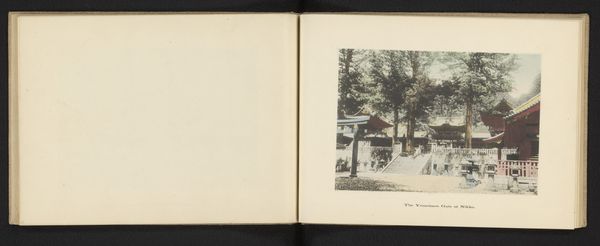
Drie vrouwen in traditionele Japanse kleding op ene bank onder kersenbloesem c. 1895 - 1905
0:00
0:00
photography
#
landscape
#
photography
Dimensions: height 105 mm, width 151 mm
Copyright: Rijks Museum: Open Domain
Curator: This photogravure print, probably made between 1895 and 1905, is entitled "Three Women in Traditional Japanese Clothing on a Bench Under Cherry Blossoms," by Kōzaburō Tamamura. What's your immediate take on it? Editor: Well, visually, it’s delicate—the pastel colors, the way the cherry blossoms almost obscure the figures. It evokes a sense of serene beauty, but also feels quite staged. I'm curious about the materiality of that experience: hand-tinting to enhance it. Curator: Exactly. This piece needs to be contextualized within the broader phenomenon of Japonisme and its relationship to colonialism. It plays into Western fantasies about the East, constructing an image of Japan that's idyllic and, frankly, romanticized. How were such idealized images produced, commodified and then consumed? Editor: We see it not only in the aesthetics of color and landscape, but also in the subjects’ costuming, likely very deliberate. Understanding what materials went into creating the image and that of the figures themselves would bring another perspective, specifically with the advent of photography as both high art and method of documentation. Curator: Absolutely, and by dissecting this construction, we confront the power dynamics embedded in the representation of non-Western cultures. These images reinforced existing colonial power structures. Editor: I wonder, what does that particular kind of photography say about labor conditions within Japan at this period, in particular those associated with its printing production? What social class are we considering? Who’s the photographer addressing? What does his labor cost and that of its consumers say? Curator: And also, we cannot ignore the objectification inherent in framing these women in this way. The women aren't active agents; rather, they are presented as picturesque elements within the landscape. Editor: Right, like props! Thinking about it this way exposes this work to other contemporary readings, those concerned with performance and labor. The backdrop of cherry blossoms gives context and visual material to its manufacture. Curator: By unraveling the multiple layers of influence and ideology, we start seeing this piece not just as an innocent image, but a potent visual text reflecting very complex cultural and political realities. Editor: I think so, yes, but it also opens up dialogue and interpretation: We need more conversation about the economic factors structuring all artistic processes. I'm left thinking: let's keep asking about production and materiality when thinking about identity and representation in photography.
Comments
No comments
Be the first to comment and join the conversation on the ultimate creative platform.

